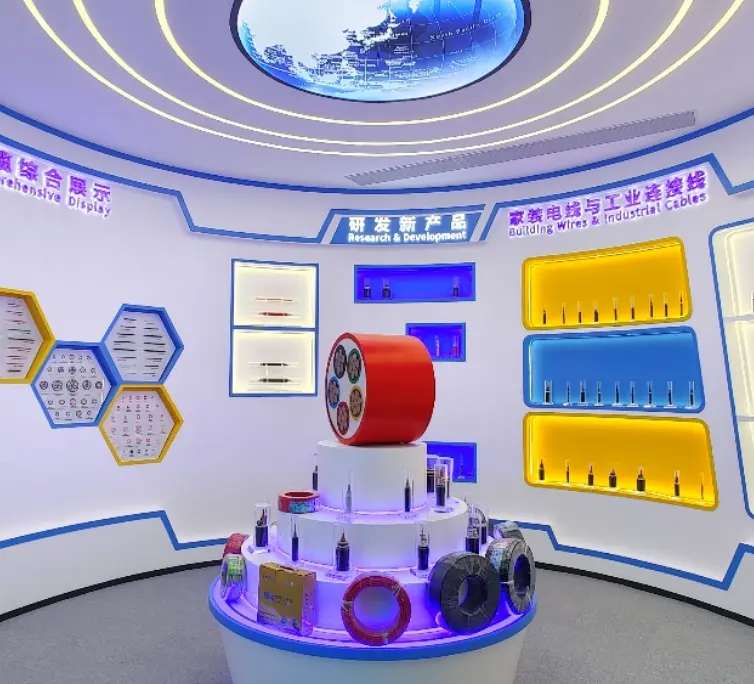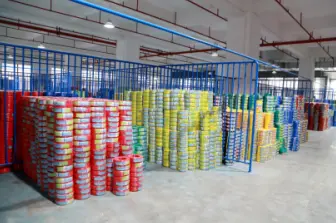What Are the Common Failures of Low-Smoke Zero Halogen Cables?
Common faults of low-smoke zero halogen cables include mechanical damage, insulation damage, insulation moisture, insulation aging and deterioration, overvoltage, cable overheating, etc. When the line has the above faults, the power of the faulty cable should be cut off, the fault point should be located, the fault should be inspected and analyzed, and then repaired and tested. After troubleshooting, power can be restored.
Direct Causes of Low-Smoke Zero Halogen Cable Faults
Overload operation: Long-term overload operation will increase the temperature of low-smoke zero halogen cables, causing insulation aging, thereby breaking down the insulation and reducing construction quality.
Electrical aspects: The cable head construction process does not meet the requirements, the cable head seal is poor, moisture invades the cable interior, and the cable insulation performance deteriorates; no protective measures were taken when laying the cable, damaging the protective layer and reducing insulation.
Civil engineering aspects: poor drainage of work well pipe trenches, cables soaked in water for a long time, destroying insulation strength; too small axes, insufficient cable bending radius, long-term external pressure damage. The main issue is mechanical vandalism in municipal construction, cutting off cables.
Corrosion: The protective layer suffers from long-term chemical corrosion or low-smoke zero halogen cable corrosion, leading to protective layer failure and reduced insulation.
Poor quality of the cable itself or cable head accessories, poor sealing performance of the cable head, dissolved and cracked insulation glue, causing resonance in the station, i.e., line break faults, forming a resonance circuit with the line's inter-phase capacitance and the grounding capacitance and excitation inductance of the distribution transformer, thus triggering ferromagnetic resonance.
What Causes Low-Smoke Zero Halogen Cable Aging?
External damage: According to operational analysis in recent years, especially in rapidly developing economic areas, a considerable number of low-smoke zero halogen cable faults are caused by mechanical damage.
Insulation moisture: This situation is also very common, usually occurring at cable joints buried directly or in exhaust pipes. For example, if the cable connector does not meet standards and is made in a humid climate, water or steam will infiltrate the connector. Over time, water trees will form under the influence of the electric field, gradually destroying the cable's insulation strength and causing faults.
Chemical corrosion: If the cable is directly buried in areas with acidic or alkaline effects, it will often lead to corrosion of the cable's armor, conductors, or outer sheath. Long-term chemical or electrolytic corrosion of the protective layer will cause failure of the protective layer, reduced insulation, and cable failure. Units with cable corrosion are quite serious.
Long-term overload operation: During overload operation, due to the thermal effect of current, when load current passes through the cable, it will cause the conductor to heat up. Meanwhile, the skin effect of the charge, the eddy current loss in the armor, and the loss of the insulating medium will also generate additional heat, raising the cable's temperature.
Cable connector faults: The cable joint is the weak link in the cable line, and cable joint faults caused directly by personnel (poor construction) occur from time to time. During the manufacturing of cable connectors, if there is over-tight pressing, insufficient heating or other reasons, the insulation of the cable head will be reduced, leading to accidents.
Environment and temperature: The external environment and heat source where the low-smoke zero halogen cable is located may also cause the cable to overheat, insulation breakdown, or even explosion and fire.
Latest News & Blog
 English
English  français
français  Deutsch
Deutsch  العربية
العربية  tiếng việt
tiếng việt  ไทย
ไทย  čeština
čeština  Indonesia
Indonesia  Eesti
Eesti  български
български  slovenčina
slovenčina 



